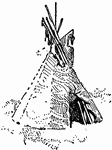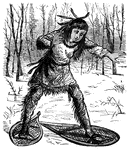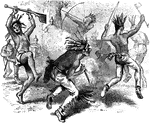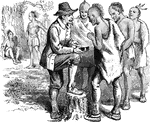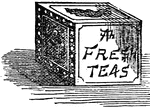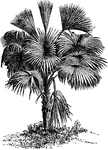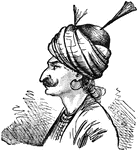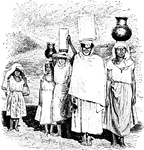
Head of Chameleon
"Chameleon is a genus of reptiles belonging to the Saurian or lizard-like order, a native of parts of…
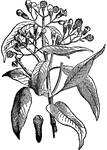
Cloves
"Cloves are a very pungent and aromatic spice, the dried flower-buds of a tree a native of the Molucca…

Coffee Plant
"Coffee is the seed of an evergreen shrub, which is cultivated in hot climates, and is a native of Abyssinia…
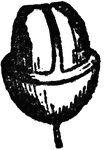
Coffee Bean
"Coffee is the seed of an evergreen shrub, which is cultivated in hot climates, and is a native of Abyssinia…

Coffee Bean
"Coffee is the seed of an evergreen shrub, which is cultivated in hot climates, and is a native of Abyssinia…

Date Palm
"Date Palm is a genus of palms, the most important species of which is the common date palm, the palm…
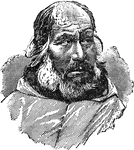
Eskimo Man
"Eskimo is the name of the inhabitants of the N. coast of the American continent down to lat. 60 degrees…

Goosander
"The Goosander is a web-footed bird in the duck family. The adult male, which measures 26 inches in…

Goosander
"The Goosander is a web-footed bird in the duck family. The adult male, which measures 26 inches in…
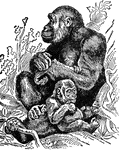
Female Gorilla
"The Gorilla is a celebrated anthropoid ape, generally belived to come nearer than any known one to…
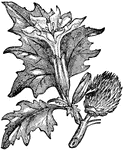
Thorn Apple
"Thorn Apple is a genus of plants. The common thorn apple is an annual plant, with smooth stem and leaves,…

Thorn Apple Bud
"Thorn Apple is a genus of plants. The common thorn apple is an annual plant, with smooth stem and leaves,…

Double Tuberose
"Tuberose (Polianthus) is a genus of plants of the natural order Liliaceæ. The plant is in high…

Tussock Grass
"Tussock Grass is a large grass, same genus with the cock's-foot grass of the United States; native…
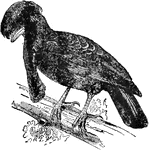
Umbrellabird
"The Umbrella Bird is a native of Peru. It is about the size of a crow, with deep black plumage; the…
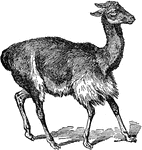
Vicuna
"Vicuna is a native of the most elevated localities of Bolivia and northern Chile. It is very wild,…

Viper's Bugloss
"Viper's Bugloss is a genus of plants. The species are large herbaceous plants or shrubs, rough with…
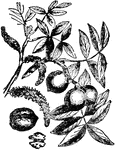
Walnut
"Walnut is a genus comprising seven or eight species of beautiful trees. The common walnut is a native…
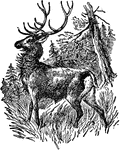
Wapiti
"Wapiti is the name given by the North American Indians to an animal, a native of North America, ranging…

Wart Hog
"The Wart Hog closely resembles the true hogs in most of their characters, and particularly in their…
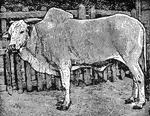
Zebu
"Zebu is the native name for any breed or individual of Bos Indicus. The zebus attain their greatest…
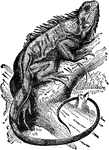
Iguana
"Iguana is a genus of saurian reptiles, natives of Brazil, Cayenne, the Bahamas, and neighboring localities…
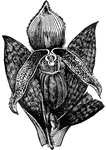
Lady's Slipper
"Lady's Slipper is a genus of plants. The genus is remarkable for the large inflated lip of the corolla.…

Myrtle
"Myrtle is a genus of plants, natural order Myrtaceæ, consisting of aromatic trees or shrubs,…
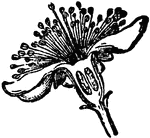
Myrtle Flower
"Myrtle is a genus of plants, natural order Myrtaceæ, consisting of aromatic trees or shrubs,…
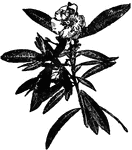
Oleander
"The Oleander is the common and sweet-scented oleander. They have lanceolate coriaceous leaves, with…
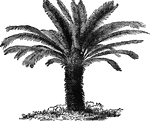
Cycas Revoluta Sago Palm
"Palm is a natural order of endogenous plants, the products of which are of extreme importance and utility…

Peruvian Indian
"Peru is a maritime republic of South America, bounded on the N. by Ecuador, on the W. by the Pacific,…

Lucian
"Lucian, the humorous satirist, was a native of Samosata, in Syria, and flourished towards the end of…

Water Rice
"Rice is a well known genus of grasses, having panicles of one-flowered spike-lets, with two very small…
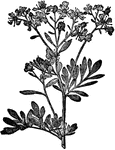
Rue
"The common rue is a half-shrubby plant, two or three feet high, of a fetid odor and an acrid taste.…

Hot Blast Smelting Furnace
"Smelting is the act or process of obtaining metal from ore by the combined action of heat, air, and…
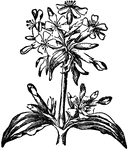
Soapwort
"Soapwort (Saponaria), a genus of plants of the natural order Caryophyllaceæ; so called because…
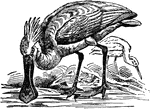
Spoonbill
"Spoonbill is the popular name of the birds of the genus Platalea, belonging to the heron family (Ardeidæ),…
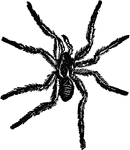
Tarantula
"The Tarantula is a large spider, with a body about an inch in length; its bite was formerly supposed…

Bust of Homer
"Of the Homeric poems the Iliad and the Odyssey were the most distinguished and have alone come down…
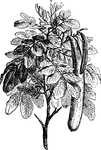
Carob Tree
Native to countries around the Mediterranean. The pods are often called locust-eans, are supposed by…

Characters
Characters of the Native Americans. The eight figures in the upper row, with hats on, and with muskets…

Sitting Bull
Known as Jumping Badger and Hunkesni, he was a Native American clergyman and leader of the Hunkpapa…

Captain W. L. Couch
Leader of the "Oklahoma Boomers," Couch and his group explored the west and Native American territory.
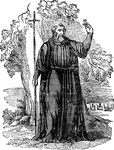
St. Patrick
"St. Patrick appears to have been a native of Boulogne, in France, and to have been born about the year…
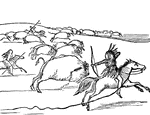
Native Americans Hunting
"The American buffalo, or more properly bison, is an object of great importance to the hunters…

Allen G. Thurman
"Ex-Senator Allen G. Thurman, of Ohio, a gentleman held in the highest esteem by both political parties,…

Igorrote
"They have little farms on the foothills of northwestern Luzon, which they plow with carabaos and sometimes…
Bagobo
"The Bagobos, who are found about the slopes of Mount Apo, wear ivory or shell earings as big round…

